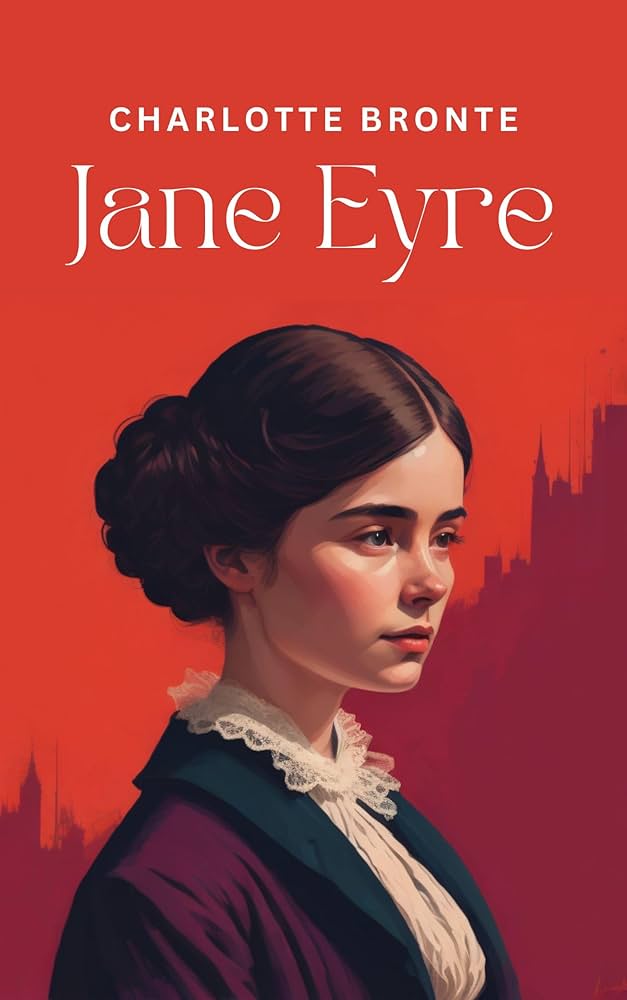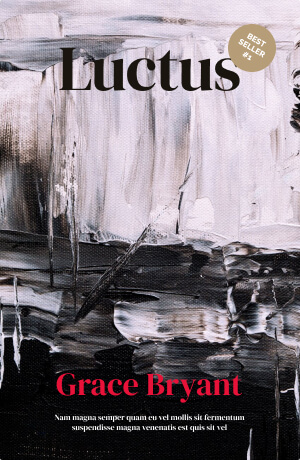MY REVIEW OF A NEW CLASSIC
Jane Eyre
Charlotte’s writing explores the big themes like love and suffering but also delves into essential issues like women’s rights and their social recognition.
But is this book worth your time? Here’s my take on it.

Introduction
“At the end, we are steeped through and through with the genius, the vehemence, the indignation of Charlotte Brontë.” – Virginia Woolf
The Brontë family from Haworth, Yorkshire, gifted the world three incredibly talented writers: Charlotte, Emily, and Anne.
Charlotte Brontë was born on April 21, 1816, and discovered her passion for reading and writing at a pretty young age. As an adult, she worked as a teacher and governess, but writing remained her true calling. Because of the era’s ridiculous ideas about the “ideal woman,” she published her works under male pseudonyms—like Currer Bell. Using this alias, she released one of the most celebrated novels in world literature in 1847, Jane Eyre. Sadly, Charlotte passed away at just 31 years old, but her legacy continues to inspire generations of writers.
“I am no bird; and no net ensnares me: I am a free human being with an independent will.” – Jane Eyre
What the book is about
Charlotte’s writing explores the big themes like love and suffering but also delves into essential issues like women’s rights and their social recognition. She was fed up with 19th-century society’s constraints on women, which left them with almost no opportunities for growth, expression, or professional aspirations. Through her female characters, Charlotte gave women a voice, emphasizing their inherent right to freedom and choice.
In chapter 12 of Jane Eyre, there’s a passage that hints at why Charlotte Brontë could be considered one of the pioneers of feminism:
“It is in vain to say human beings ought to be satisfied with tranquility: they must have action; and they will make it if they cannot find it. Millions are condemned to a stiller doom than mine, and millions are in silent revolt against their lot. […] Women are supposed to be very calm generally: but women feel just as men feel; they need exercise for their faculties, and a field for their efforts as much as their brothers do; they suffer from too rigid a restraint, too absolute a stagnation, precisely as men would suffer.”
The story of Jane, the heroine of Jane Eyre, is what we’d call today a transformational journey. Jane is a young orphan who struggles against life’s challenges to discover her identity. Her childhood is straight out of a Cinderella story—raised by her aunt, Mrs. Reed, alongside three spoiled cousins who treat her terribly. Things get so bad that she’s eventually sent to Lowood School, an institution for orphan girls. Life at the school isn’t easy either, but Jane finds solace in books, knowledge, and a loyal friend, Helen Burns. But when Helen tragically dies of typhus, Jane’s world is shattered again.
Time passes, and Jane becomes a teacher at Lowood. Six years later, she leaves to work as a governess at Thornfield Hall, taking care of an eight-year-old girl, Adele. The child’s mother is a Frenchwoman who claims that Mr. Edward Rochester is the father, though he never acknowledges her as legitimate. But he does provide for Adele, and it’s in this setting that Jane and Rochester begin to develop feelings for each other.
At this point, you might think I’ve spoiled the story, but trust me, there’s so much more to this novel. Jane Eyre is beloved not just for its storytelling but for its layers of intrigue. Jane’s life is full of lessons learned the hard way—about herself, love, and pain. But is Edward Rochester really the knight in shining armor, or is he just a 19th-century gaslighter? The truth he hides from Jane is devastating, and his excuses don’t hold up. Personally, I couldn’t root for him, and I didn’t think he deserved a happy ending just because he eventually apologized. His behavior struck me as selfish and manipulative, even though he’s painted as some sort of victim of his circumstances.
This is where the book gets even more fascinating: Rochester is such a dualistic character. He’s both generous and deceitful, using his power and status to manipulate someone who not only trusts him but loves him deeply. What Jane Eyre does so well is force you to reflect on the moral responsibility we have toward someone else’s emotions when we’re in a relationship.
“I care for myself. The more solitary, the more friendless, the more unsustained I am, the more I will respect myself.” – Jane Eyre
How will Jane handle this situation? Will she use her hard-earned life lessons to create a reality that truly suits her, or will she let time and distance help her calm down enough to make the right decisions? Will she, this fiercely independent woman who’s fought so hard to protect her self-respect, give in to Edward’s regrets?
My Conclusion
This dilemma sets the stage for a gripping internal conflict, where there’s no room for self-compromise.
Jane Eyre is a nonconformist but holds onto her values and principles with fierce determination. Maybe now, more than ever, it’s fascinating to follow such a tenacious spirit and witness the strength of her love. Because today, love is often misunderstood—not as a need, but as a weakness of those who “don’t have life figured out.”


